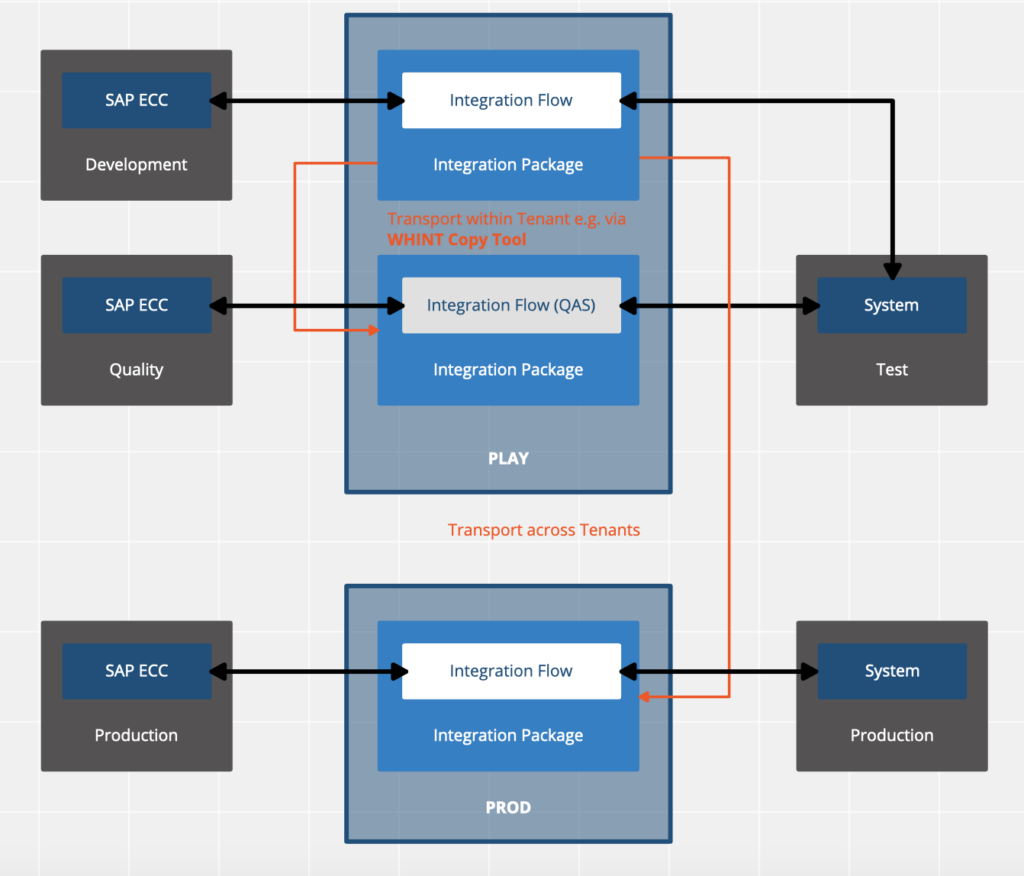This article should help you to decide of you need one, two or more SAP Integration Suite tenants. In SAP PI/PO times, companies were typically using a Development (DEV), a Quality Assurance (QAS) and a Production (PRD) environment. This was mostly reflecting the 3-tier (or more) environment of an SAP ECC/CRM/EWM landscape)
- DEV for the interface design (mainly for ESR usage), mapping development and local (unit) tests
- QAS for integration testing against the quality landscape
- PRD for production usage
The hardware was also sized to handle the main traffic in PRD, whereas QAS was typically sized with less memory and cores, although having a similar setup (usage of servers and server nodes) and DEV had the lowest requirements and hardware assigned. From a license point of view, only PRD was relevant regarding payments to SAP.
With SAP Integration Suite, all traffic is counted, so each test message is calculated, not only the traffic in PRD. Also, each tenant comes with a base fee (e.g. 4635 EUR / month for a standard edition in December 2024). So there is a reasonable decision to make of you want to spend more than 50K € per year for each environment.
You can lower your costs by just operating two environments: PLAY & PROD
PLAY for all your development and connectivity to systems of the environments
- Development
- Test
- Staging
- Quality Assurance
- Validation / Pre-Production
PROD for all connectivity to production systems
However, you might still need develop (and test) your integrations independently and then you have to work with copies of your integration content. Like this, you define a virtualized landscape within your PLAY tenant.

Doing this manually can be painful (and impossible, e.g. when you want to simply test a change coming from an original object that was copied before), so the use of tooling is highly recommended. There is an offering from Figaf, where you can manage a virtual landscape, but can also simply use a copy tool. Please note that copying a value mapping is not used that often as you might expect.

Lastly, lets have a look at a realistic lifecycle of an integration flow in a 2-3 tier environment:
- We start with the build in our main integration flow (and package) in our PLAY tenant.
- After initial development/unit testing we copy connect the iFlow to a TEST system (many Non-SAP-Systems have just a 2-tier landscape).
- After a successful test, we transport the artefact(s) to the PROD tenant and perform the go-live.
- Changes to the integration flow can be done either directly in the integration flow or in a (local) copy

Of course you can also change that approach to connect your main iFlow with your TST and QAS systems and run a DEV copy against your DEV systems (also connecting to TST or not connecting the system at all).
Last Update: 15. December 2024

